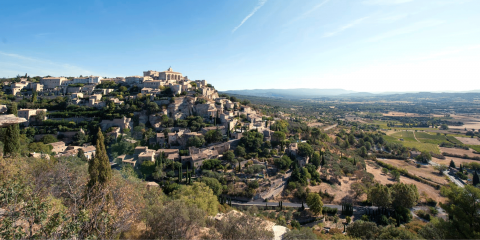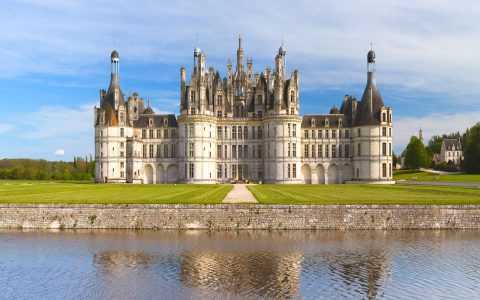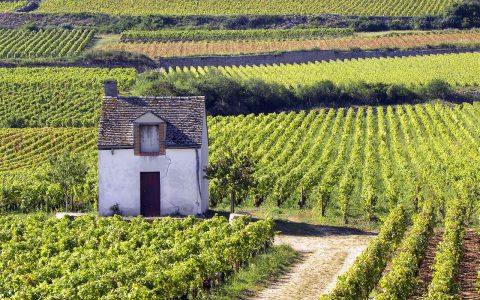In Deep:
A (Brief) Look at
Loire Valley History
![]()
 Dotted with châteaux (castles) and besought by war, the history of the Loire Valley is long and involved—too long and involved to do justice to in a single blog post.
Dotted with châteaux (castles) and besought by war, the history of the Loire Valley is long and involved—too long and involved to do justice to in a single blog post.
In the interest of brevity, we’ll focus our history lesson on the period when most of the region’s fortresses and châteaux were built.
Loire Valley History:
The Dauphin and The Hundred Years’ War

In 1420, after England had won some important battles during the Hundred Years’ War (1337–1453) and gained control of most of northwest France, the English and French signed the Treaty of Troyes. This treaty would allow Henry V, King of England, to become king of France when Charles VI, the current king, died.
Both Henry and Charles died at about the same time, however, so Charles’ son, Charles VII, proclaimed himself king instead, although the French would not recognize him as king until he was crowned in the cathedral in Reims, which was then under English control. So the Dauphin (as the uncrowned heir to the throne was known) hid out in the Loire, where the population was loyal to him.
The Garden of France
Far from the constantly shifting borders between France and England, the Loire was safe for the Dauphin. It was also an easy place from which to run the country, as the Loire River was navigable 10 months of the year, and therefore a very important travel route at a time when roads in France consisted of uneven dirt tracks.
Thanks to the trade that the river made possible, the Dauphin was able to enjoy the produce of his kingdom almost year-round: the blueberries of Orléans, the asparagus of Blois, the cabbage and plums of Touraine and the pears of Anjou.
The Dauphin also enjoyed living in the Loire because of the prevalence of excellent wine grown there. Thanks to the long-standing presence of royalty and aristocracy in the Loire Valley, it is said that the purest French is spoken in the Loire.
Experience Loire Valley With B&R
Scheduled Group Biking Trip
See just how sweet life is here! Our Loire Châteaux Biking trip allows you to take a romantic ride through history. Slum it with Richard the Lionheart, Joan of Arc, and Leonardo da Vinci, as you stay at not one, but two châteaux. You’ll feel like royalty at every turn.
DETAILED ITINERARYPrivate Group Biking Trip
On our Loire Valley Biking trip, we roll out the red carpet for you in the playground of French kings and queens past. Bike through the stunning countryside and take in the regal châteaux, ancient monuments and, of course, miles of verdant vines.
Detailed ItineraryJoan of Arc

In 1428, the English laid siege to Orléans, a strategic city that controlled a large part of France’s north-south traffic. Joan of Arc (from a small village in Champagne) travelled to Chinon to persuade the Dauphin to support her with an army. The nationalist sentiment espoused by Joan of Arc was a novel idea at the time, and was instrumental in uniting the French. Joan was able to drive the English out of France and thanks to her, Charles VII was crowned in Reims.
Thanks to the “unification” of the French under Joan of Arc, France was governed under Charles VII in a more centralized way, calming the infighting between members of the aristocracy. As a result, the fortified manors of the Middle Ages became unnecessary.
From Fortress to Château
After the unification of France, subsequent French kings—Charles VIII, Louis XII and Francis I—admired the aesthetic they saw in Italy during various military campaigns, and they imported Italian gardeners, architects and artisans to construct beautiful palaces in the Loire. Through them, the Italian Renaissance arrived in France.

The kings often paid for the loyalty of their noble subjects by offering them the expertise of the best Italian craftsmen in the building of their own palaces. The bourgeoisie grew richer by loaning money to the king, and they too poured money into Renaissance-style residences.
Under Henry II of France, however, the seat of power gradually shifted to Paris. As royal favour and money moved away from the Loire, there existed insufficient funds to destroy and rebuild the Renaissance châteaux in the “new” styles of the 17th or 18th centuries. Gems like Chenonceau and Azay-le-Rideau have been immaculately preserved as a result.
MORE FROM France + Loire Valley

Grape Harvesting in Ventoux
France
The Top 5 Hiking Routes in Provence and Cote d’Azur
Provence
With Vineyards, Beaches, and Quaint Villages, Île de Ré Is France’s Best-kept Secret
France
Photo Diary: A Sunday in Provence with B&R Guide Tatjana Buisson
Provence
5 Ways to Relive the Renaissance in the Loire Valley
Loire Valley
The Best Luxury Hotels in Paris: From Classic to Contemporary
France
Secrets of the Seine
Île-de-France
6 Reasons Why You Need to Visit Normandy, France
Normandy
10 Best Markets & Shops in Provence
Provence
Bordeaux Nouveau: France’s Coolest City Right Now
Bordeaux
Falling Head Over Heels for Burgundy
Burgundy
The World’s Best: Top 15 Bordeaux Wines
Bordeaux
Rediscovering A Classic: Burgundy
Burgundy
Reading for the Road: Our 5 Favourite Books About Bordeaux
Bordeaux
The Pleasures of Southwestern France
Bordeaux
Normandy’s Showstopper: Mont Saint-Michel
Normandy
Reading for the Road: Our Favourite Books About Normandy
Normandy
Abbaye de la Bussière: English Hospitality in the Heart of France
Burgundy
Secrets of the Loire Lifestyle
Loire Valley


